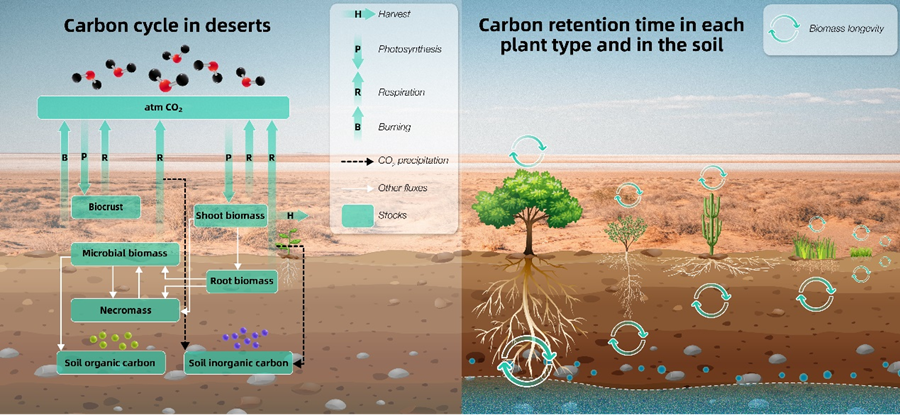Researchers Unveil Pivotal Role of Root System Architectures in Storing Carbon and Nutrients in Desert Ecosystems
2024-03-18
In a research review published in New Phytologist, researchers led by Prof. ZENG Fanjiang from the Xinjiang Institute of Ecology and Geography of the Chinese Academy of Sciences have examined how different root system architectures of desert plant species can influence nutrient and carbon cycling under climatic and human-induced changes.
Climate change can severely disrupt desert plant communities, with droughts affecting shallow and deep-rooted plants as groundwater levels fluctuate. The depth of the groundwater decisively shapes the composition of the plant community, distinguishing between deep-rooted and shallow-rooted plants.
Small changes in groundwater levels can significantly impact desert plant species. These changes can influence plant community composition and carbon and nutrient stocks in biomass.
Plants with shallow roots are especially vulnerable to increased warming and reduced precipitation, limiting their presence in moist environments. While an abundance of deep-rooted plants can increase carbon and nutrient stocks, overall biomass may decrease, resulting in a net loss of carbon and nutrients.
Anthropogenic activities, such as burning vegetation, harvesting biomass, and grazing, significantly shift the plant community structure from deep to shallow-rooted plants, resulting in changes in aboveground biomass, nutrients, and carbon stocks.
"Implementing strategic management practices, such as reducing grazing pressure, maintaining moderate harvesting levels, and adopting moderate fertilization, is crucial to preserving plant-soil systems,” said Dr. Akash Tariq, the study's first author.
This review provides insights into root system architectures and their roles in storing carbon and nutrients and shaping landscapes in desert ecosystems.
Article link: https://doi.org/10.1111/nph.19676

Figure 1: Carbon cycle in desert soils

Figure 2: Mineral nutrient cycle and distribution in desert soils

Figure 3: Impact of land management practices on carbon and nutrient stocks of desert plants
Contact
LONG Huaping
Xinjiang Institute of Ecology and Geography
E-mail: longhp@ms.xjb.ac.cn
Web: http://english.egi.cas.cn



